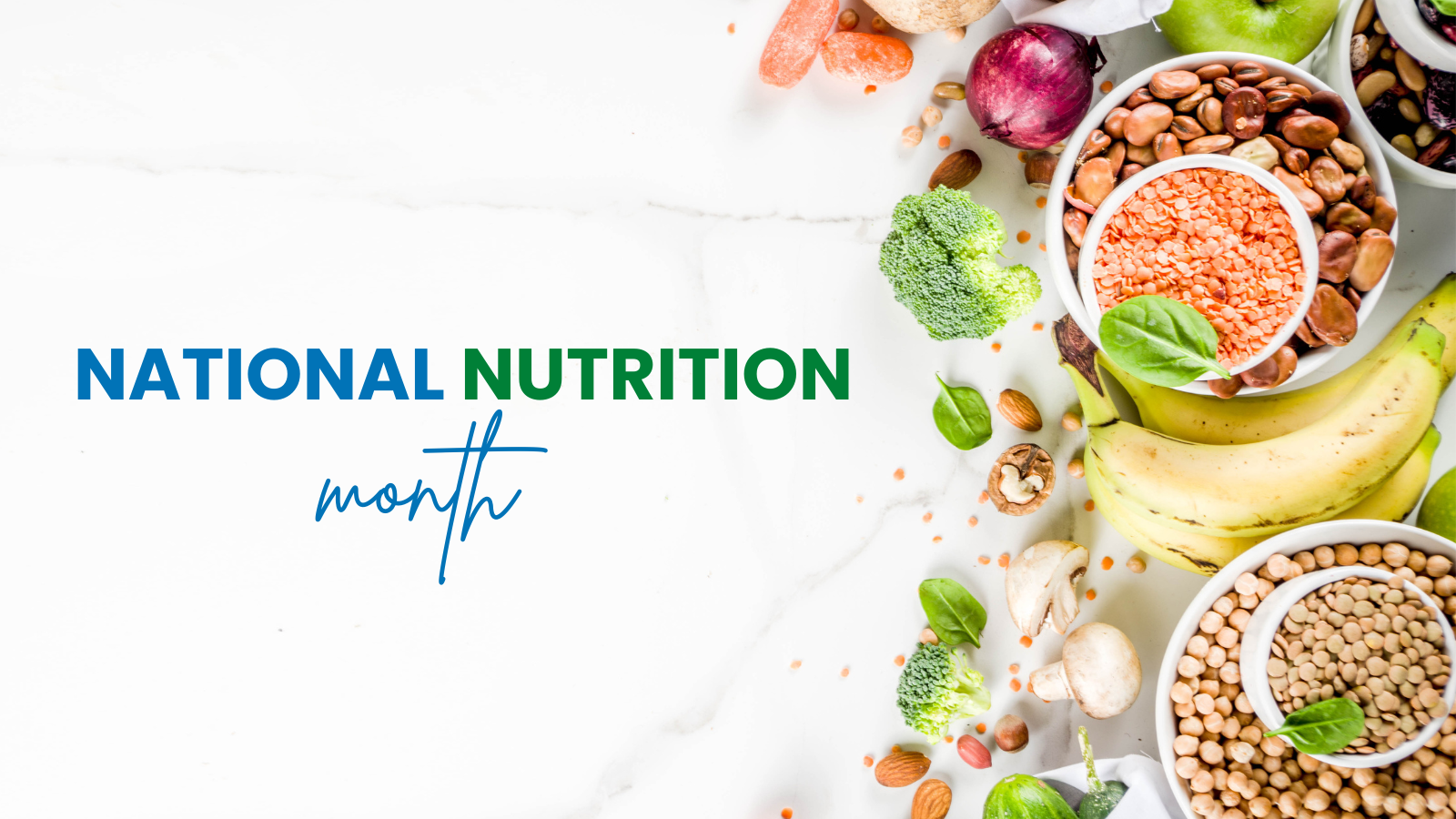
- Blog /
- March 1, 2023
National Nutrition Month
Happy March, and happy National Nutrition Month!
Conscious eating can be tricky when leading a busy life. Most of us do not have access to organic, fresh ingredients every single day, and so eating takeout and roaming the grocery isles hungry and tired sounds more familiar. Among many complex reasons, this is part of why one of one out of three US adults are currently overweight or obese. According to The Lancet, estimates predict that if US trends continue unabated, roughly half of all men and women will be obese by 2030.
Now more than ever, increasing awareness of what we eat is an important step toward a healthier, more balanced diet. Trans fats, for instance, have long been linked to besity in America. Reading the nutrition labels on what you pick up from the grocery store is the easiest way to moderate your intake, however, the Food and Drug Administration only requires food manufacturers and restaurants to list it on the nutrition label if a serving contains more than 0.5 grams of trans fat. Multiple servings of food with a little less than 0.5 grams (yet listed as zero) can add up to a significant intake.
Here are some popular foods that are high in trans fats:
Coffee Creamers – If you are a coffee lover, creamers may be a regular part of your morning. Coffee creamers are mostly made up of water, oils, and sugar as they are typically free from cream or lactose products. Because some creamers may list zero grams of trans fat per serving, those oils can easily add up if you drink multiple servings of coffee daily.
Frozen Dinners – Frozen foods are likely to contain trans fat to make the foods more stable and to give them a fatty feel in your mouth. Of course, some meals like frozen fish and vegetables can make wonderfully nutritious meals. As with other foods, make sure you check the nutrition label.
Margarine Sticks – Margarine was previously marketed as a healthier alternative to butter because it’s made from vegetable oil instead of animal products. But for the margarine to maintain its solid form, many types, mainly stick varieties, depend on partially hydrogenated oils high in trans or saturated fat.
Seed Oils – Possibly the hardest category to avoid in its broadness. Nowadays, it has become nearly impossible to find a seed oil -free meal in major cities. Some of the most common seed oils that you may be consuming on a daily basis include soybean, corn, canola, cottonseed, rapeseed, grapeseed, sunflower, safflower, and rice bran. While you may not be using seed oils directly in your cooking, many of them are present in the processed foods and packaged goods that may appear healthy. “Healthy” food items like granola bars, certain bread, dried fruits, and baked chips more often than not include seed oils in their ingredients. Certain sauces and dressings almost universally contain seed oils. For example, unless it is explicitly specified that the mayonnaise is house made with olive oil, you should assume it contains canola or soybean oil.
Especially if you live in a city, opting for digital help can make a big difference: An app called Seed Oil Scout is one example of a guide focused specifically on spotting seed oil. It offers reports on cooking oils from restaurants all over the country, is moderated for accuracy, and makes narrowing down your options easier.
Celebrate National Nutrition Month by becoming more aware about what your food contains. By taking a proactive stance in preventing and fighting cancer, you’ll be taking an important step towards becoming the happiest, healthiest version of yourself!
Source: Health, 20 Popular Foods With Hidden Trans Fat, Amanda MacMillan and Amanda MacMillan, December 13, 2022
